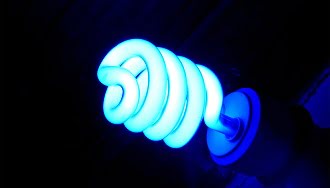WEST LAFAYETTE, Ind., April 9, 2019 — A treatment using blue light to eradicate MRSA could be in doctors’ hands in as little as two years.
The bacteria, researchers found, produces pigments that are susceptible to blue light, and the light can be used to photobleach the organism’s activity in the body.
“We found that this superbug produces pigments,” said Mohamed Seleem, a professor of microbiology at Purdue University’s College of Veterinary Medicine. “These pigments are associated with MRSA’s ability to damage the host, and if you know how to reduce the pigment, then, you might be able to reduce the organism’s activity in the body. This practice is known as photobleaching. When you bleach something in the wash machine, you’re extracting the color using chemicals. What we’re doing here is similar, but we’re using blue light to remove the pigments from MRSA so they can be easily killed.”

LED photo courtesy of Pexels.
Exposing the bacteria to blue light can render it defenseless against antiseptics as mild as hydrogen peroxide. The discovery was purely accidental, revealing itself when the research team made the unexpected finding that MRSA pigments can be photobleached at 460 nm.
“This new tool can treat any superficial wound infected with MRSA, which are typically very difficult to treat,” Seleem said.
The light used to treat MRSA, Seleem said, must be blue because it needs to be a certain wavelength (460 nm) that falls in the blue light range and not is toxic to the human body. The researchers built a portable device composed of a blue LED with a central emission wavelength at 460 nm for clinical application.
Seleem explained that methicillin-resistant Staphylococcus aureus (MRSA), a bacterium that causes infection in various parts of the body, is resistant to many common antibiotics. While most MRSA infections are not serious, some can be life-threatening and sometimes result in amputation of the infected appendage.
“Here, we report an approach to treat MRSA through photolysis of staphyloxanthin, an antioxidant residing in the microdomain of S. aureus membrane,” he said. “This photochemistry process is uncovered through transient absorption imaging and quantitated by absorption spectroscopy, Raman spectroscopy, and mass spectrometry.”
Photolysis of staphyloxanthin, Seleem added, transiently elevates the membrane permeability and renders MRSA highly susceptible to hydrogen peroxide attack. Consequently, staphyloxanthin photolysis by low-level 460 nm light eradicates MRSA synergistically with hydrogen peroxide and other reactive oxygen species.
After achieving promising results in vitro, researchers exposed mice with MRSA-infected wounds to different wavelengths of light. The infections responded especially well to light in the blue region, and combined with a low-concentration hydrogen peroxide reduced significantly.
“The effectiveness of this synergistic therapy is well validated in MRSA planktonic culture, MRSA-infected macrophage cells, stationary-phase MRSA, persisters, S. aureus biofilms, and two mice wound infection models,” he said. “Collectively, our work demonstrates staphyloxanthin photolysis as a new therapeutic platform to treat MRSA infections.”
With the success of the experiments on mice, the next step is to conduct clinical trials on humans, after which it may be ready for practical use in as little as two years.
The technology is patented through Purdue’s Office of Technology Commercialization. Ji-Xin Cheng, a professor of biomedical engineering at Boston University, is working to arrange clinical trials. The new study was published in Advanced Science (https://doi.org/10.1002/advs.201900030).